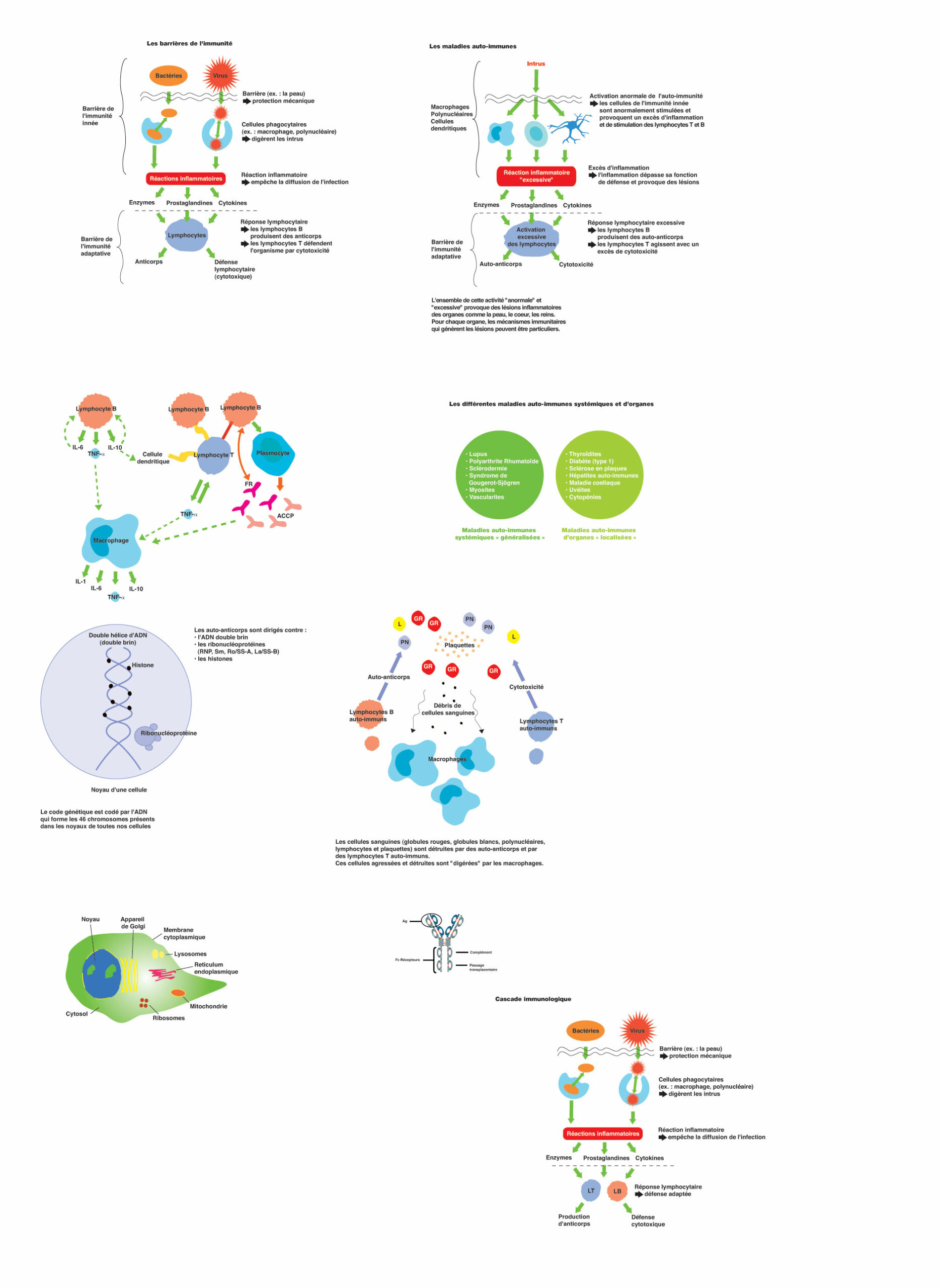Protilátky proti DNA jsou podskupinou antinukleárních protilátek, které se zjišťují specifickými identifikačními testy. Tyto testy jsou v podstatě imunoenzymatické, nazývané ELISA (Enzyme Linked Immuno Sorbent Assay) a Farrův test. Cílem těchto testů je identifikovat a kvantifikovat rozvinutou autoimunitní reakci proti DNA chromozomů. Tato chromozomální DNA se nazývá nativní, protože se jedná o skutečně "čistou" DNA, tvořenou známou dvojitou šroubovicí. Skutečnými markery lupusu jsou tedy protilátky proti nativní DNA, ale nikoli protilátky proti denaturované DNA (která je tvořena pouze jednou šroubovicí). Anti-denaturované protilátky lze detekovat za mnoha okolností, patologických i nepatologických, a jejich hledání není pro diagnostiku nebo léčbu lupusu užitečné.
Protilátky proti nativní DNA jsou pro lupus velmi charakteristické, ale nejsou přítomny u všech pacientů. Tyto protilátky proti nativní DNA jsou vynikajícími diagnostickými markery lupusu, které jsou přítomny již od počátku onemocnění. Jsou však detekovány pouze u 60 až 70 % pacientů, a to zejména v době, kdy je onemocnění aktivní. Jinými slovy, skutečným lupusem můžete trpět i bez nativních protilátek proti DNA. V takovém případě máte jistě antinukleární protilátky namířené proti jiným strukturám jádra (například: anti-Ro/SS-A a/nebo anti-La/SS-B), ale je také možné, že se anti-nativní DNA objeví později, v průběhu onemocnění.
Protilátky proti nativní DNA mohou přímo způsobit poškození lupusem, například poškození ledvin. Jejich míra se liší podle aktivity onemocnění. Tyto protilátky proti nativní DNA mají také patogenní roli, protože tím, že se usazují v ledvinách pacientů, způsobují glomerulární nefropatii.
Čím aktivnější je vaše onemocnění, tím vyšší je hladina protilátek proti DNA v krvi. Pokud tedy trpíte lupusem s protilátkami proti nativní DNA, lékař bude pomocí tohoto testu sledovat průběh vašeho onemocnění.

Nativní protilátky proti DNA jsou autoprotilátky detekované u 60-70 % systémového lupusu, což znamená, že nejsou přítomny vždy. Tyto autoprotilátky, velmi užitečné pro diagnostiku, se zjišťují rutinními laboratorními testy. Jsou součástí několika užitečných vyšetření pro sledování lupusu.